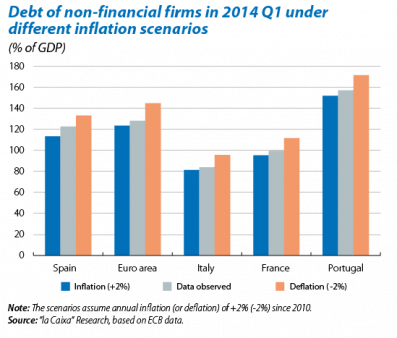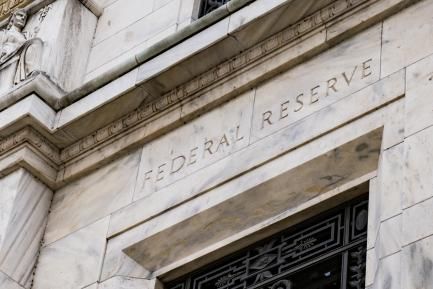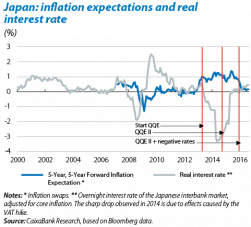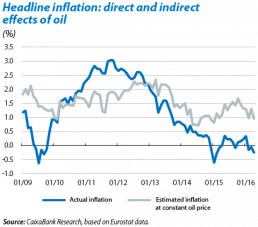The latest inflation figures for the world's main economies are surprisingly low. In the euro area inflation fell to –0.2% in December, bringing the average for 2014 to 0.4%. In the United Kingdom, although the growth rate was surprisingly high in 2014, inflation has followed a clearly downward trend, reaching 0.5% in December, its lowest figure for the last 15 years. The United States is in a similar situation. Just when it seemed that the economic recovery was finally starting to take hold in most advanced economies, the spectre of deflation has reappeared on the scene.
A scenario of falling prices is not, in itself, necessarily detrimental to economic activity. If the nominal cost of production factors, i.e. capital and labour, could adjust at the same rate as prices, economic activity would not be affected. This is not the case, however. Wages, for example, are often very difficult to lower. In such circumstances, if prices fell for a prolonged period, a lot of firms would find themselves in dire straits.
Similarly worrying are the possible consequences of a sustained drop in prices for the cost of capital: if prices fall and the nominal interest rate does not follow suit, the real interest rate rises. To offset a drop in prices and keep the real interest rate constant, the nominal interest rate has to be lowered. But how far can the nominal interest rate fall? Can it even reach negative figures?
This question has partly been answered by recent events. The ECB, for example, set the deposit facility interest rate at –0.10% in June 2014 and lowered it again in September to –0.20%; decisions which, until very recently, had seemed unimaginable. Other central banks have taken a similar path, such as in Switzerland and Denmark. Several bonds also have a negative interest rate. For example, German public debt with maturities of less than two years have been trading more or less continuously on the secondary market at a negative interest rate for the last six months.
In practice, therefore, interest rates already broke through the psychological barrier of 0% several months ago. However, the scenario that economists truly fear is one in which falling prices end up diminishing the expectations of households and firms regarding their future trend. In the case of households, for example, if they expect prices to continue falling, and the nominal interest rate does not follow suit, they will postpone their decisions to consume and invest as the real interest rate will rise and, therefore, also the return on their savings. In this scenario, however, the role played by the nominal interest rate could be limited since, as this falls, households would change the composition of their portfolio towards riskier assets to get better returns. Moreover, if the nominal interest rate ends up in negative terrain, this might increase the preference for cash, given that this would have a positive real interest rate (the purchasing power of a note or coin rises over time if prices fall), albeit entailing significant storage and security costs.
The dilemma facing firms would be similar. In a scenario with expectations of sustained falls in prices and in which the nominal interest rate is very close to zero or negative, firms will also tend to postpone investment decisions. All this would depress the economy and push prices down even further, which would result in the dreaded deflationary spiral.
There are significant signs, however, that lead us to believe the current situation in developed economies and the euro area in particular is not a precursor to deflation. Firstly, we should note that the drop in inflation occurring over the last few months is largely due to falling oil prices. In the euro area, for example, of the 0.6 pps reduction in the inflation rate between July 2014 and December 2014, the energy component had directly contributed to the tune of 0.5 pps. In fact, core inflation (without food and energy) has remained almost stable at 0.7% during the same period. Over the coming months, the indirect effects of lower oil prices are likely to materialise gradually, with falling prices for oil-intensive manufactured goods and transport services. According to the ECB's estimates,1 two thirds of the impact of the fall in oil prices can be seen in direct effects and one third via indirect effects. In any case, the downward pressure of oil prices on the inflation rate will gradually disappear over the next few months as the base effect dissipates.
Secondly, the dynamism seen in private consumption and investment in many advanced economies suggests that neither consumers nor companies have postponed decisions to consume or invest; quite the opposite, in fact. Albeit with significant differences between countries, it appears that favourable financing conditions are finally being used to implement consumption and investment decisions postponed during the recession.
Nonetheless, there are two reasons why the trend in inflation in those countries that still need to make macroeconomic adjustments needs to be monitored very closely, and with some trepidation. On the one hand, many of them have to improve their competitiveness to revive their export sector and thereby rebalance their external position. A context of low inflation, or disinflation, in their trading partners means that it is difficult to continue making gains in competitiveness by containing wages and prices (internal devaluation). The second reason is the deleveraging that is still being carried out by many developed countries. As can be seen in the second graph, the impact of a moderate inflation scenario, or deflation, on the trend in the debt to GDP ratio is significant. By way of example, if inflation in Spain had remained at 2% since 2010, the debt of non-financial firms to GDP would have ended 2014 at 113%, 9 pps below the actual figure. On the other hand, in a scenario with average inflation of –2%, the debt to GDP ratio would be 133%, 11 pps above the actual figure.
Moreover, in these countries the lack of economic policy instruments to boost inflation is also a cause for concern. How can inflation remain so low with rock bottom interest rates and after injections of liquidity by the main central banks in developed countries? It is also surprising that, in numerous countries such as Germany, the United Kingdom and the United States, where unemployment appears to be close to its equilibrium rate and the output gap has almost closed, core inflation is still so low. These questions are analysed in detail in the articles «Inflation: merely a monetary phenomenon?» and «Growth without inflation: what does the Phillips curve tell us?», in this Dossier.
In short, many developed countries are keeping a close eye on inflation but, beyond the temporary effect of oil prices, economic logic invites us to conclude that it should start to pick up again. We need to remain cautious, however. The effectiveness of the policies carried out to date has not been as hoped and a scenario of deflation, although unlikely, could have serious consequences.
Gerard Masllorens
Macroeconomics Unit, Strategic Planning and Research Department, CaixaBank
1. For more information see «Box 3: Indirect effects of oil price developments on Euro Area inflation», Monthly Bulletin, European Central Bank, Frankfurt am Main, December 2014.




